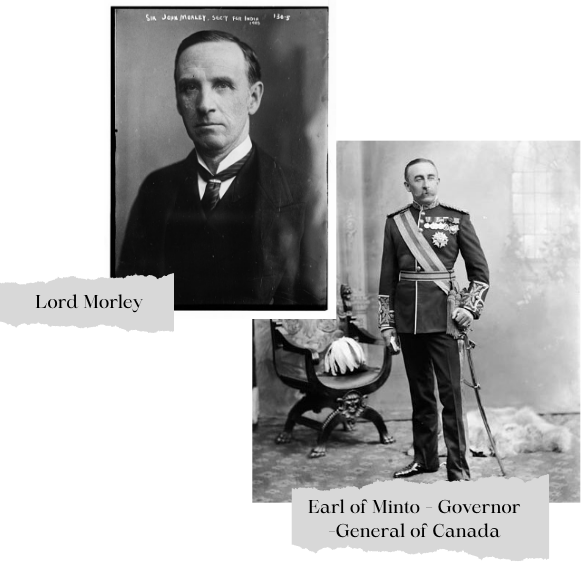The Indian Council Act of 1909
The act led to further expansion of the legislative council,, both at Central and
provincial level and functions were also increased. For the first time an Indian
became part of the viceroy executive council. It introduced the concept of a
separate electorate for Muslims. The Act ‘legalised communalism’ and
Lord Minto came to be known as the Father of Communal Electorate
- The act provided for considerable increase in the size of the legislative
council, both Central and provincial level.The number of members in the
Central Legislative Council was raised from 16 to 60. The number of members
in the provincial legislative councils was not uniform
- It enhanced the functions of the legislative councils at both the
levels, permitting the members to ask supplementary questions, move
resolutions on the budget, and so on.
- For the first time Indians were made associated with the executive Councils
of the Viceroy and Governors. Satyendra Prasad Sinha became the first Indian
to join the Viceroy’s Executive Council. He was appointed as the law
member
- The act introduced the concept of ‘separate electorate’.
Under this, the Muslim members were to be elected only by Muslim voters.
- . It also provided for the separate representation of presidency
corporations, chambers of commerce, universities and zamindars.
